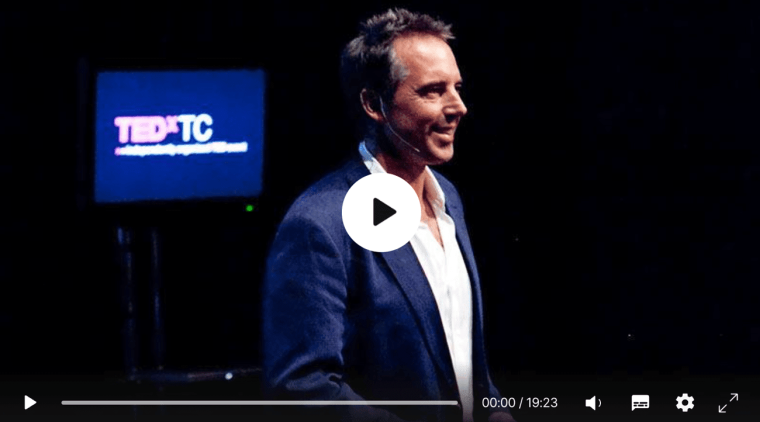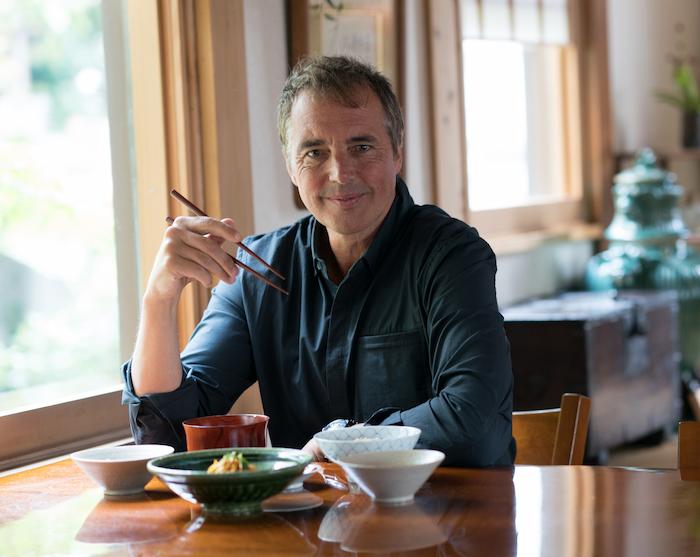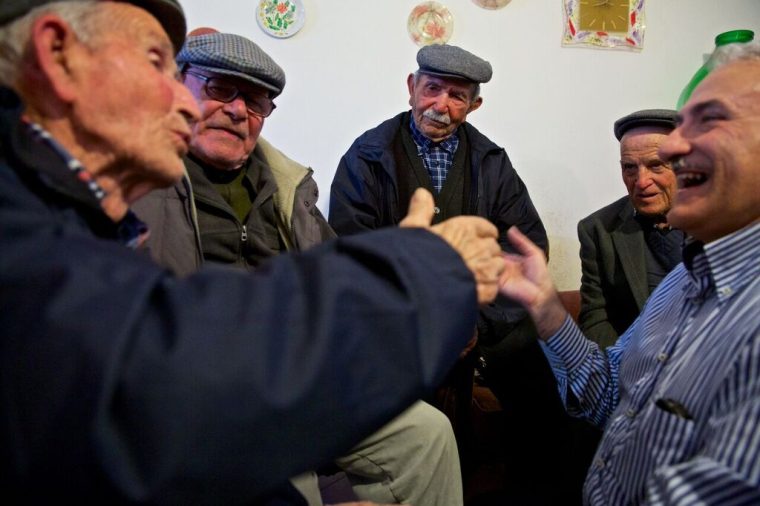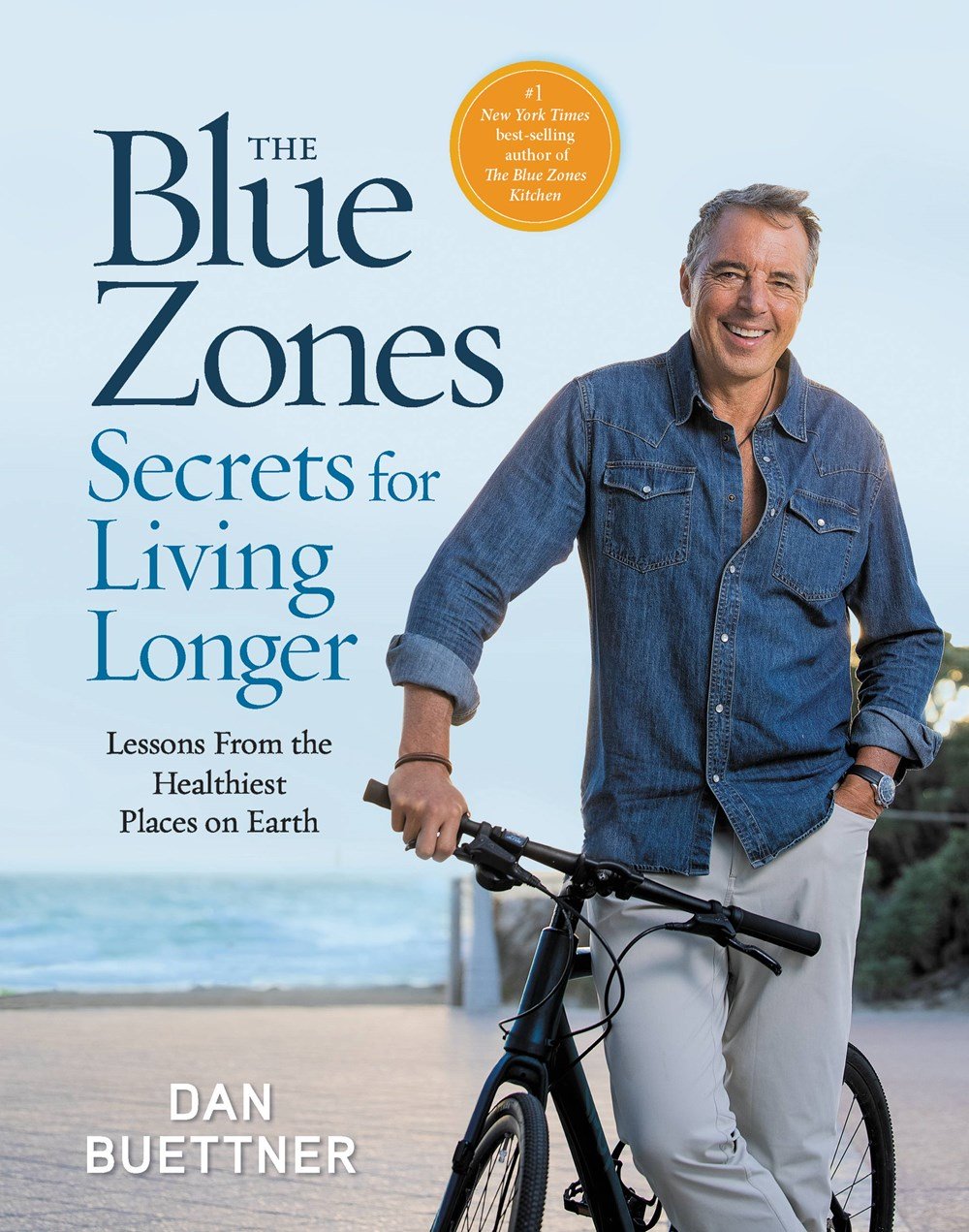This might sound like a humblebrag, but… bear with me. I don’t know how else to start this thought.
I recently completed a 10-day Vipassana meditation retreat—and if you’re not familiar with that “program,” let’s just say that Vipassana is rather austere.
You relinquish ALL of your electronics before you even set foot in the place (and you don’t get them back until you’re leaving).
Once you’re inside, you vow not to talk, drink, or engage in any sexual behaviors (among other things) the whole time you’re there.
Last but certainly not least, you meditate from 4:30am to 9pm every day, with only three hours’ personal time and a couple of small vegan meals to cover you.
To some people, that sounds worse than prison. To me? It was a challenging delight, for lack of a perfect phrase.
I will admit, though, that there were times when I was awfully bored. Some of it, I figured, is my habit of being physically and mentally active—traveling, riding my bike, seeing people, writing this newsletter, and so on and so forth. As much as I love those ways of being busy, I had to separate myself from them to do the retreat.
But I realized something else, too—something not about me specifically, but about all of us. You want to know what I realized?
We’re really bad at slowing ourselves down, especially nowadays.

In general, we suffer when we don’t give ourselves enough of them. Sleep-deprived people are likelier to experience headaches and car crashes (among many other problems); athletes pushed to their physical limits are a lot likelier to hurt themselves; and so on.
Even if that weren’t true (and it is), skimping on downtime and rest are stressful. They stress us out mentally, yes, but they also strain a lot of our body’s little support systems. The inflammatory response caused by stress, especially chronic stress, is associated with exactly the kinds of diseases we’re afraid will kill us—like heart disease and Alzheimer’s.

I’ll be talking more about meditation in Add Life to Your Years, but in the interest of proving that slowing down and/or meditation isn’t too woo-woo for red-blooded readers, I want to start by talking about a version of it which is already working quite well in America’s very own blue zone—namely, the Seventh-Day Adventist community of Loma Linda, California.
Forgive me, Mother, for I’m about to do something you’d forbid.

Growing up, I learned that there are three topics polite people never discuss at the dinner table—and those three topics are (say ‘em with me) sex, politics, and religion.
This newsletter and I have a lot of respect for the dinner table, but… care to guess which taboo I’m about to break?
(Hint: It’s the only one of the three that consistently encourages people to slow down.)
That’s right: I’m gonna talk a little bit about religion today.
Lest you worry that this health newsletter is about to go off the rails, a few concise words of reassurance and clarification:
- I mean “religion” in the broadest sense of the word, where it’s basically synonymous with “spirituality” and in which atheists and agnostics can still be included (insofar as they believe in things greater than themselves).
- I’m not here to talk to you about my own religion or beliefs. I’m sorry, but they’re mine and you can’t have them.
- I’m not trying to pitch you on any particular religion, tradition, denomination, or philosophy—nor am I even saying you have to follow any particular religion or philosophy at all.
- I’m not interested in passing judgment on anyone’s beliefs. Again, I’m sorry, but they’re yours and I don’t want them. I’ve got my own.
So, as odd as this may sound, I’m completely sincere when I say that I’m here to present some scientific information on the health benefits of religion. Still, as always, you can do with the information as you please.
Everyone still with me? Great!
Having said all of that, it is a fact that religion correlates with individual health, wellness, and longevity. In other words: people who belong to a religion get sick less often (and are far likelier to have a support system when they do), are happier in terms of both overall life satisfaction and day-to-day emotions, and live longer on average than people who don’t belong to a religion.
I’ve got stats out the wazoo, but to drop one specific example: People who participate in religious worship at least four times per month have a life expectancy 4-14 years longer than those who don’t. That’s a pretty huge gain from going to one weekly worship!
It is also a fact that there are strong threads of religious tradition in all of the world’s blue zones, even if they differ in their dogmatic flavors. Okinawans practice an ancient and venerable form of ancestor worship (pardon the simplification); Sardinians, Costa Ricans, and Ikarians typically go to Mass, Catholic for the former two and Greek Orthodox for the latter.
This brings us to Loma Linda, California—the American Blue Zone. whose main distinction from the average American community is its particular brand of religiosity.
Loma Linda is predominantly a Seventh-Day Adventist community. It’s neither the only place you can find Seventh-Day Adventists nor a majority of their American population, but Loma Linda is unique for its high proportion of Adventists (usually a tiny, tiny minority) and its Adventist roots.
No matter your opinion of Seventh-Day Adventist theology, I just want you to observe that (A) their faith teaches certain habits which are scientifically proven to increase longevity and (B) the Adventists of Loma Linda live about a decade longer than the average American despite being Americans themselves.
In other words: religion is the only major difference between Loma Linda and an average American community, and something about that religion helps its followers to live a decade longer than everyone else.
Diet is part of the difference. Seventh-Day Adventists eat a Biblical diet, which just so happens to resemble the classic blue-zone diet in its preponderance of legumes, seeds, and green plants (with no mention of meat in either direction). Like Mormons, Adventists refrain from consuming mind-altering substances like alcohol, tobacco, and even caffeine and sweeteners—boring to most Americans, but blissful to the body.
Exercise is also part of the difference. Seventh-Day Adventists typically go on a weekly nature walk with their families so they can reconnect with their natural environment and clock some quality time together. Again, this resembles the blue zones’ preference for consistent, low-impact exercise done mindlessly in the course of their daily lives.
But—returning to today’s theme—arguably the biggest difference between typical Americans and the Adventists of Loma Linda is their regular habit of downshifting, reflecting, and decelerating daily life.
Seventh-Day Adventists observe the Sabbath from sunset on Friday until sunset on Saturday, and during that time they avoid virtually all secular activities: no business, shopping, sport, or recreational socializing. They call this period their “24-hour sanctuary in time,” and they take it very seriously; no matter how busy or stressed they may be, they treat it as a sacred and inviolable space.
Again, think whatever you will of their theology. As far as health and longevity are concerned, how many Americans can say that they have a built-in, weekly opportunity to decouple from the real world and decompress for an entire day? Not many!
I talk more about this idea in my best-known TED talk, so if you’d like more details straight out of my mouth, head on over and have a look!
In summary, I would suggest that the main cause of religion’s boost to longevity is that it consistently gives us a reason to slow down and keep better track of the Bigger Picture, which helps us to keep all the parts of our health in some kind of harmony.
If you’re already a person of faith, then my broad advice to you is to lean into the aspects of your faith that remind you to slow down sometimes, to take care of yourself as well as others, and to invest in your community. That community reminds and helps you to slow down… and not least of all, they make the slower time worth savoring.
If you’re NOT a person of faith, then my broad advice to you is to ask yourself what you can do to slow down and unplug, to refocus your pace and priorities—and most importantly, how you can make such things regular and consistent and habitual.
If this kind of slowdown sounds like one more chore, let me reassure you that you will FEEL better when you do it. Once you see for yourself, that might be reason enough (never mind all of the long-term benefits also).
It’s a cruel irony that the people who would benefit most from meditation are often the ones who have never done it before. But if you’re curious—or at least, not too stubborn for your own good—read on for a practical beginner’s guide!
BY THE WAY: If you didn’t know that I speak on health and wellness… now you do! I love getting to spread the word straight to people’s ears—so if you want me to share lessons on health, happiness, and longevity with your company or organization, drop me a line here!

Meditation is a tricky subject to write about. It’s a buzzword, first of all, so readers make certain assumptions and feel certain ways the moment they see it in print. Meditation is also indelibly personal and endlessly variable by its nature; it’s something you do inside your own head, after all.
Regardless, meditation is a very real thing for billions of people around the world—and it’s a very effective thing in terms of their health and wellness. Meditation does measurable, noticeable good for most people who’ve ever bothered to measure or notice it; it lowers heart rate, increases blood circulation, and improves self-reported well-being, among many other little systemic benefits.
The tricky thing here (for me) is that the overwhelming majority of people who begin reading an article on meditation such as this will fall into one of two groups:
- They already (know how to) meditate and they already “get it,” so they don’t really need any guidance.
- They DON’T already meditate and, in many cases, they’ve never been tempted to give it a serious try. If asked why not, they’ll make a variety of excuses—that they don’t “get it,” that they struggle to sit still, that they don’t know what to do with their hands—or they’ll even admit, straight up, that it seems weird and woo-woo and they don’t see the appeal. (Two points for honesty, I guess.)
My hope is that there are a few of you, somewhere between these two groups, who are willing to open their minds to the idea that meditation can help you live a longer, healthier life—and hey, it can make you feel good while you do it!
In a situation like this, my instinct is to go back to square one and establish some key foundational information. Two basic questions come to mind:
- What is meditation?
- What do you do (mentally or otherwise) while you meditate?
Starting at the top…
Having tried to define the term myself, I can see why explanations of meditation often wind up sounding like koans and haikus. I’ve made a few attempts at defining meditation, with the most dictionary-friendly version coming first:
- Meditation is a mindfulness practice for clearing your thoughts, calming your emotions, relaxing your body, and focusing your energies. Meditation is time set aside for the mind to consciously do nothing in particular and to be at peace with itself as it currently exists.
- Meditation is the deliberate choice to stand still and observe the stream of consciousness rather than immerse ourselves and continue swimming in it.
- Meditation is the proactive exercise of metacognition where you reflect on your own thoughts and feelings as they occur naturally, without being prompted by any specific stimuli (as opposed to the reactive exercise of metacognition, where you reflect on your thoughts and feelings as they arise in daily life).
Contrasts with Three Similar Verbs:
- If contemplation is having time alone with your thoughts (without other people intruding upon them), meditation is making time for your thoughts to be alone (without other needs intruding upon them).
- If rumination is where you can’t do anything in particular but thinking, meditation is where your thinking doesn’t have to do anything in particular.
- If fixation means spinning your wheels, going around and around in your head without getting anywhere, meditation means stopping the car and letting yourself sit still in the driver’s seat.
Still, even with a buffet of definitions, some of you are still struggling a bit because this is all very abstract. Perhaps you need some kind of picture or how-to in your head before this will click. So I’ll oblige and move on to Question #2.
Let me reiterate something trite, but very true: there’s no “right way” to meditate except the way that works for you. The guidelines I’m about to provide are broad and generic and still very much open to interpretation and improvisation (like recipes whenever you’re doing the cooking).
Here’s the general idea of what I might do when I meditate, in five steps:
#1: Silence All Predictable Interruptions. Attention spans are fragile, but especially when they’re pointed inwards. We’re still members of the Animal Kingdom and therefore tuned for survival; any mental bubble we create for ourselves WILL burst if presented with a stimulus strong enough to be (to the animal brain) a potential threat.
In human terms: do something about your phone, because smartphone notifications (even just a gentle buzzing on silent mode) are more than enough to break the spell. Even if we push the thought away, most of the damage is already done if you become aware of a notification.
#2: Quiet and Suppress Sensory Inputs. Of the five classic senses, sight and sound are the most important to control for meditation because they present the greatest potential for distractions and interruptions. Just one little sound, or one little flash of light, and our brain’s security system can click on before we ever have a chance to stop it.
It’s normal for people to close their eyes when they meditate (or pray), and this is ultimately because closing our eyes is the quickest way to shut out 60-80% of our brain’s sensory input and get an instant boost in mental focus (sight is immensely distracting because it’s basically a firehose of raw information). Closing your eyes works anywhere, but it still helps to lower the lights—and, if you’re constantly tempted to open your eyes, consider a soft eye mask to block the temptation in its tracks.
As for sound: if you don’t have any naturally quiet places at the ready, you can always create one with earplugs (the old-school analog route), noise-canceling headphones (the new-school tech route), or a white-noise app like Noisli (the super-new-school software route).
#3: Set a Backdrop (As Needed). If you think there’s a risk that you would fall asleep and/or miss whatever’s next on your calendar, you should set an alarm to serve as the “backdrop” for your meditation session.
(If you can help it, you do NOT want your meditation time to be plagued with worries about how it will end—so the alarm actually protects your meditation time insofar as it prevents certain unpleasant negative reinforcements from happening.)
Just make sure that it’s a gentle alarm tone set to lower volume. You want a tap on the shoulder when it’s time to wrap up; you don’t want to end a session of quiet reflection with a frickin’ heart attack!
#4: Get Physically Comfortable and Relaxed. Your exact physical configuration is up to you, but three popular choices are (A) criss-cross applesauce, (B) upright in a chair, or (C) lying supine, i.e. flat on your back.
They have different advantages and disadvantages; for instance, supine requires the most space/furniture and it’s the likeliest way to fall asleep, but it also makes it easiest to fully relax your muscles and focus inwards (in my opinion).
So far as I can tell, these are the two most important factors in any method of physically placing and managing your body during meditation:
- Being able to relax as many of your muscles as possible, as fully as possible. The more effort you have to exert (both physically and mentally) to maintain your body’s position, the less you’re able to relax—and the less you can relax, the less effective and pleasant the meditation.
- Being able to remain comfortable for as long as possible with a minimum of movement. Ideally, your entire body could go slack (as though every individual muscle were paralyzed) and you would still be comfortable. The more (and more often) you have to move to fix discomforts, the less you’ll be able to “sink into” the meditation and feel refreshed afterwards.
#5: Let the Brain Float. This is the most abstract and variable by its nature, but here are two different strategies for (minimally) directing your brain during meditation:
- Somatic Control — In this case, you’re more focused on your physical body in all of its minute details, both sensations and controls. A common goal here is to focus on body parts one at a time, often from head to toe or vice versa, to pay attention to what you feel from them and/or to teach yourself how to fully relax them. (Trust me… it’s harder than it sounds.)
- Metacognitive Acceptance — In this case, you’re more focused on the stream of thoughts flowing through your mind. A common goal here is to get yourself standing on the proverbial riverbank, where you can observe each and every thought passing through your mind, and accept all of those thoughts simply as they are. No matter the thought and no matter your gut emotional reaction to it, train yourself to respond mentally: And that’s okay. It’s okay to have thoughts and feelings you can’t fully control, because that’s being human—and the first step to doing anything with that is accepting it.
Modern life affords us more and more distractions, but at the end of the day, we still have to be able to keep the peace inside this invisible glass room we call “consciousness.” Woo-woo or not, meditation is unique for acknowledging that the mind is a space deserving of its own attention and maintenance—and if you ask me, the extra sanity you get back is pretty valuable if you want to live for a century.

The Blue Zones American Kitchen is available now! If you haven’t ordered your copy yet, you can do so from any retailer where books are sold. Each week, we’re celebrating some of the incredible chefs who have shared their brilliance with us in this lost American Diet of Longevity.
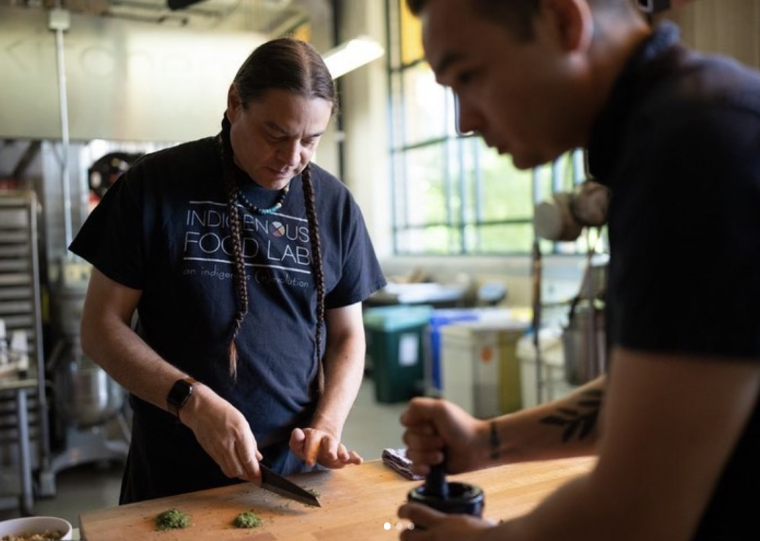
Born to the Oglala Lakota Sioux tribe in South Dakota’s Pine Ridge reservation, Sean Sherman moved to Minneapolis as a young adult and has worked to bring back Indigenous foods and disseminate them throughout his community.
He is co-founder and co-owner of the @the_sioux_chef, @natifs_org, @indigenousfoodlab, @owamni, and @bipocfoodways. This past June, the James Beard Foundation named Owamni the best new restaurant in the United States.
You’ll find his recipes for Stuffed Squash Halves with Blueberry Wojapi and Lion’s Mane and Nettle Tamales with Plum Sauce in The Blue Zones American Kitchen.

The Better Vinaigrette Salad

Ingredients
½ cup navy beans, soaked overnight and drained
5 medium beets, scrubbed
3 medium sweet potatoes, scrubbed
2 carrots
½ cup frozen peas
½ cup diced pickled cucumbers
½ cup sauerkraut
½ cup diced raw Persian cucumbers
2 tablespoons olive oil
½ tablespoon apple vinegar
Salt
½ cup finely chopped green onion
The Method
Add the beans to a large pot. Cover with more than 3 inches of water, bring to a boil, and then reduce to a simmer. Simmer for 45 minutes to 1 hour, tasting after 45 minutes to get the desired tenderness.
Fill a separate large pot with enough water to cover the beets and bring to a boil.
Add the beets and cook for 45 minutes to 1 hour, checking after 45 minutes to reach the desired tenderness.
In separate pots, boil the carrots and sweet potatoes for 30 minutes each until their skins easily come off with a fork or knife. Drain the vegetables and refrigerate them or let them sit in an ice bath until chilled.
Peel the skin from the beets, sweet potatoes, and carrots, and finely dice them into even cubes.
In a separate pot, boil the frozen peas for 6 to 8 minutes. Drain and cool to room temperature.
In a large mixing bowl, add all the vegetables, oil, vinegar, and salt to taste. Mix to combine.
Allow the ingredients to sit together for at least 2 to 3 hours (or overnight).
Serve topped with the green onion.
